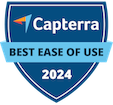The purpose of a class registration flyer is to create interest in your afterschool program, not to close the sale (unless you’re accepting paper enrollment forms, in which case you should read this: Online Registration).
You can’t settle for anything less than great class registration flyers if you want to have a successful program. That’s right, if those bits of paper are doing their job, they should catch parents’ attention before they land in the trash, and more importantly, get them to take action and sign up their children for a class.
We looked at hundreds of registration flyers and found the key ingredients that make a class registration flyer great. The main takeaway was to keep the flyer simple and make sure they have the following:
-Essential class details
-Less is more, so do avoid unnecessary information because too much clutter can keep a parent from reading the flyer.
-Decide on two or three important points and determine what a parent needs to see to compel them to get more information. Pare down the information to create an easy to understand class registration flyer.
-The content should be short and to the point. Include a clear call to action, as we will discuss below, and exclude excessive punctuation or capital letters (there’s no need for exclamation points and words in all caps in every sentence).
This flyer [Pinterest: Camp Flyer] is a great example of showing parents what they need to know.
Call to Action
Decide on a clear, concise call to action before creating your message. What do you want parents to do once they have read your flyer? Do you want them to call, go to your website to sign up, or email you?
Make sure you define one singular action clearly and plainly so that there is no question as to what you want them to do. More than one call to action decreases the effect and can result in lost signups.
The flyer we highlighted earlier [Pinterest: Camp Flyer] is a prime example of not giving parents a clear call to action. While the flyer clearly lets parents know what they are offering, they bury the call to action at the bottom.
Contact Details
Your contact details should not be the first thing a parent sees when reading your flyer, but it should be prominently displayed and large enough to be noticed.
Contact information shouldn’t be a pre-made image that is sized-down to fit in a given space on the flyer because it becomes too small and blurry and is easily missed or impossible to read.
When designing your flyer, test it on a few parents or friends and see if they can easily find your contact information. If they have a difficult time, then you may want to adjust your design. This is a great example [Pinterest: Sign up Flyer] of a flyer that clearly displays the contact details.
Summary
A simple, professional design has an impact on its own. Overly-cluttered, off-putting colors or junky photos guarantee low success. People are visual and will give more attention to flyers that are easily understandable. It should not require a lot of time for parents to understand the value of your afterschool enrichment program, what action they should take to register their child, and how to contact an administrator if they have any questions.

